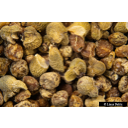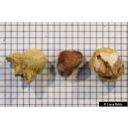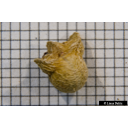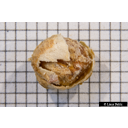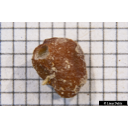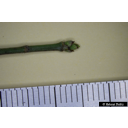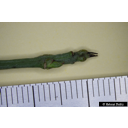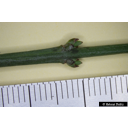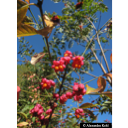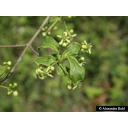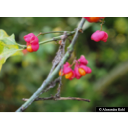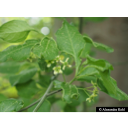Useful information about the taxon (species, subspecies, variety...)
Euonymus europaeus L. 1753
Celastraceae
(APG IV)Taxon concept: The Plant List (2014), version 1.1
Distribution: Europe; Caucasus; Turkey
Flowering period: V - VI
Euonymus europaeus L. - Accepted: Euonymus europaeus L. bei The Plant List (2010); Familie: Celastraceae (APG III)Euonymus europaeus L. - Accepted: Euonymus europaeus L. bei The Plant List (2014), version 1.1; Familie: Celastraceae (APG III)Euonymus europaeus L. - Accepted: Euonymus europaeus L. bei The Plant List (2010); Familie: Celastraceae (APG IV)Euonymus europaeus L. - Accepted: Euonymus europaeus L. bei Schmeil-Fitschen 2019; Familie: Celastraceae (APG IV)Euonymus europaeus L. - Accepted: Euonymus europaeus L. bei BfN Checklist Flora DE; Familie: Celastraceae (APG IV)Euonymus europaeus L. - Accepted: Euonymus europaeus L. bei World Flora Online - APG IV (Angiosperms); Familie: Celastraceae (World Flora Online - APG IV (Angiosperms))
- Color of flower
- greenish white
- Flowers
- hermaphrodite flowers
- Flower ecology
- insect-pollinated (entomophilous) (mainly Diptera and Hymenoptera)
- Life form
- woody, shrub
- Leaves
- opposite; lamina ovate to lanceolate, dark green
- Foliage persistence
- deciduous
- Fruits
- fleshy capsule, contains seeds with orange arillus (seed coat)
- Soil conditions
- on fresh, nutrient- and base-rich, more or less deep clay and loam soils as well as mull soils
- Root type
- densely rooted
- Natural occurrence (habitat)
- hedgerows, herb-rich alluvial forests; from lowland to middle highland, (limestone and loam regions)
- Comment to ecology
- indicator of loam soils
- Natural propagation (all types)
- vegetative reproduction through stump sprouts and root sprouts
- Safety advice
- seed is toxic
- Status of alien naturalisation
- indigenous plant
- General recommendation
- recommended for beekeeping
- Usage
- as ornamental plant
Bundesamt für Naturschutz (BfN) (1999-2001 and ongoing): Floraweb - Daten und Informationen zu Wildpflanzen und zur Vegetation Deutschlands. www.floraweb.de.; Erhardt, W., Götz, E., Bödeker, N. & Seybold, S. (2008): Der große Zander. Enzyklopädie der Pflanzennamen. Band 2. Arten und Sorten. Eugen Ulmer KG, Stuttgart (Hohenheim), 18. Aufl., 2103 S.; Haider, M. et al. (2005): Wildbienenkataster. See: https://www.wildbienen-kataster.de; Jäger, E. J. et al. (2007): Rothmaler - Exkursionsflora von Deutschland. Band 5: Krautige Zier- und Nutzpflanzen. Spektrum Akademischer Verlag, Aufl. 31.10.2007: 880.; Karl Hiller et al. (2010): Lexikon der Arzneipflanzen und Drogen.. Spektrum, Heidelberg, 2. Auflage 9783827420534.; Oberdorfer, E. (2001): Pflanzensoziologische Exkursionsflora. Für Deutschland und angrenzende Gebiete. Eugen Ulmer Verlag, Stuttgart, 8., stark überarb. u. erg. Aufl, 1056 S. 978-3-8001-3131-0.; Parolly, G. et al. (2019): Schmeil-Fitschen: Die Flora Deutschlands und angrenzender Länder.. Quelle & Meyer Verlag, Wiebelsheim, 97. Aufl.; Pritsch, Günter et al. (1985): Bienenweide.. Neumann-Neudamm, Melsungen; Schick, B. & Spürgin, A. (1997): Die Bienenweide. Eugen Ulmer Verlag, Stuttgart, Auflage: 4., völlig neubearb. u. erw. A., 216 S. 978-3800174188.; The International Plant Names Index (2009). Published on the Internet http://www.ipni.org; Courtesy to IPNI, 2009. Exported from IPNI at date: 2009-09-22 20:17:51; Westrich, P. et al. (2018): Die Wildbienen Deutschlands.. Ulmer Verlag ISBN 978-8186-0123-2.;
Diese Webseite verwendet Google Maps, um Karten und Standorte von Pflanzen in den Hohenheimer Gärten anzuzeigen. Dadurch werden unter Umständen Daten an Google weitergeleitet, was mit einer Verarbeitung Ihrer personenbezogenen Daten verbunden sein kann. Die Datenschutzerklärung von Google finden Sie hier: Datenschutzerklärung von Google
| Sex | Standort | Accession number | Planting year | Donation | IPEN | Lat. | Long. |
|---|---|---|---|---|---|---|---|
| Parzelle F | EG-F-085-13837 | 2003 | XX-0-HOH-EG-F-085-13837 | 48,7091397938 | 9,2063422467 | ||
| Parzelle K | SP-KS-001-10535 | 2018 | XX-0-HOH-SP-KS-001-10535 | 48,7110159738 | 9,2158417068 | ||
| Parzelle K | SP-KS-014-10560 | 2018 | XX-0-HOH-SP-KS-014-10560 | 48,7110184901 | 9,215539913 | ||
| Parzelle K | SP-KS-016-10561 | 2018 | XX-0-HOH-SP-KS-016-10561 | 48,7109111824 | 9,2155641309 | ||
| Parzelle K | SP-KS-017-10562 | 2018 | XX-0-HOH-SP-KS-017-10562 | 48,7109128933 | 9,2155388508 | ||
| Parzelle K | SP-KS-103-15895 | 2019 | XX-0-HOH-SP-KS-103-15895 | 48,7108970499 | 9,214448955 | ||
| Parzelle L | SP-LS-011-10657 | 2014 | XX-0-HOH-SP-LS-011-10657 | 48,710794333 | 9,2150883372 | ||
| Parzelle L | SP-LS-013-10659 | 2021 | XX-0-HOH-SP-LS-013-10659 | 48,7107563774 | 9,2151644857 | ||
| Parzelle L | SP-LS-019-23489 | 2021 | XX-0-HOH-SP-LS-019-23489 | 48,71056455 | 9,21519126 | ||
| Parzelle N | SP-NS-075-10796 | 2017 | XX-0-HOH-SP-NS-075-10796 | 48,7117141917 | 9,216619806 | ||
| male and female flowers on the same individual | Parzelle N | SP-NS-066-16375 | 2017 | XX-0-HOH-SP-NS-066-16375 | 48,7115372438 | 9,2167360414 |

